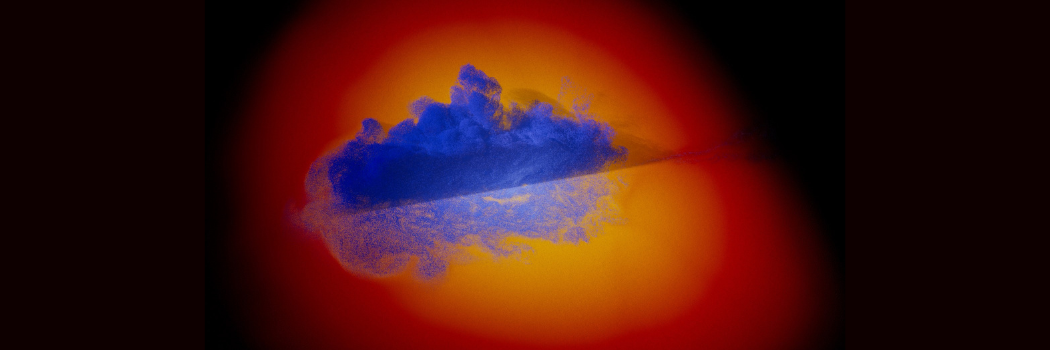Scientists challenge theory behind Jupiter’s mysterious interior

Supercomputer simulations carried out by researchers in our top-rated Physics department cast doubt on a proposed explanation for the structure of Jupiter’s core.
They found no evidence to support the idea that a massive collision with another planet could have created Jupiter’s remarkable dilute core.
Jupiter’s dilute core
Jupiter’s core does not have a sharp boundary but instead blends gradually into the surrounding layers of mostly hydrogen.
The origin of this dilute core is unclear, but understanding it is of particular interest to scientists, especially since Saturn is also thought to have a similar internal structure.
The research findings challenge a previous study that suggested that a collision with another planet billions of years ago could have thoroughly mixed-up Jupiter’s core, enough to explain the planet’s interior today.
Advanced computer simulations
The research team, which included scientists from NASA, SETI and CENSSS, University of Oslo, performed simulations on the DiRAC COSMA supercomputer, using the state-of-the-art SWIFT software.
These new simulations allowed scientists to better understand what might have happened if a large planet had collided with Jupiter.
Their results suggest that even if a massive collision occurred, the heavy materials in Jupiter, after initially mixing into the surrounding layers, would quickly sink back down, forming a core with a sharp boundary.
Their results suggest that even if a massive collision occurred, the heavy materials in Jupiter would not get mixed to a stable state, and a core with a sharp boundary would re-form soon after the impact.
A new understanding of giant planets
These findings have big implications for how we understand not only Jupiter, but giant planets more broadly.
The simulations carried out in this study suggest that the gradual transition of materials seen in Jupiter today likely formed over a much longer period, rather than in a single dramatic event.
As part of this study, cutting-edge simulation methods were developed, proving to be highly effective for modelling planetary impacts.
Going forwards, these methods will allow scientists to study, with unprecedented accuracy, the processes that have shaped both the planets in our Solar System and exoplanets around distant stars.
Find out more
- The research team includes Dr Thomas Sandnes, Dr Vincent Eke, Dr Jacob Kegerreis, Professor Richard Massey and Dr Luis Teodoro.
- Read the full paper published in Monthly Notices of the Royal Astronomical Society.
- Interested in studying at Durham? Explore our undergraduate and postgraduate courses.
Our Department of Physics is ranked 88th in the QS World University Rankings by Subject 2025. Visit our Physics webpages for more information on our undergraduate and postgraduate programmes.


/prod01/prodbucket01/media/durham-university/departments-/physics/teaching-labs/VT2A9034-1998X733.jpeg)
